Laboratory Fume Hoods
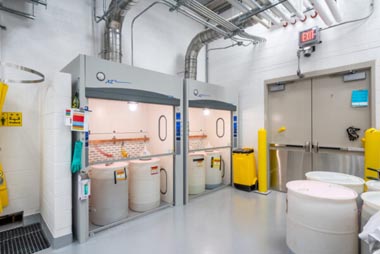
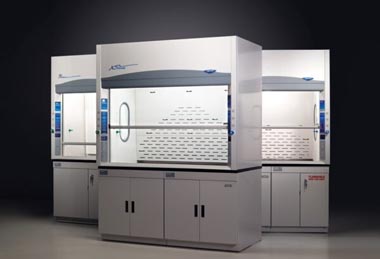
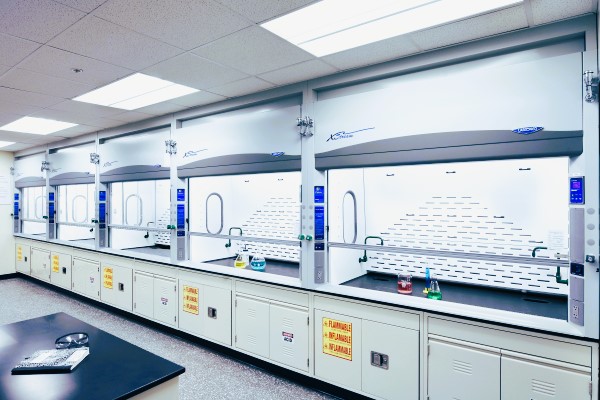
Chemical Fume Hoods
Laboratory fume hoods are an important piece of equipment used in the laboratory to protect workers from hazardous, volatile and noxious substances. It is critical that workers understand the risks associated with laboratory chemicals before operating a chemical fume hood. Laboratory fume hoods circulate and filter air to eliminate possible vapors produced. Specialty Solutions offers a variety of options of fume hoods that filter out dangerous fumes and vapors.
What types of hazardous substances require a chemical fume hood?
Chemical fume hoods are primarily used to protect personnel from hazardous or toxic fumes. Substances that require a chemical fume hood may include volatile and corrosive liquids, as well as compounds with dangerous vapors or gases, such as mercury and acid-based materials. Radioactive materials may also require a chemical fume hood for safety reasons. It is important to consult the specific safety data sheet (SDS) of any hazardous material in order to determine if it requires specialized containment measures like those offered by a chemical fume hood. In addition, the local fire code should be consulted when determining which chemicals require protection via a fume hood. Safety must always be the top priority when dealing with hazardous chemicals. Keeping workers and surroundings safe can help minimize the risks when working within a laboratory.

Laboratory Fume Hoods (Ducted and Ductless Fume Hood)
Ducted fume hoods are the most common type, and are typically composed of a steel structure or that is connected directly to the mechanical air system to exhaust air outside.. Air is pulled through the sash opening and out of the room, while makeup air is provided either by an open window in the laboratory or a dedicated supply fan. The advantage of having a ducted system is that more contaminated air can be removed from the room than with a ductless system.
Ductless fume hoods or filtered fume hoods provide protection for lab personnel using very little energy and don’t require high mechanical system redesign costs. They do not rely on outside airflow for operation like ducted hoods do; instead, their effectiveness relies entirely on filtration technology. Both options of chemical fume hoods are designed to protect the user from potential hazardous fumes.
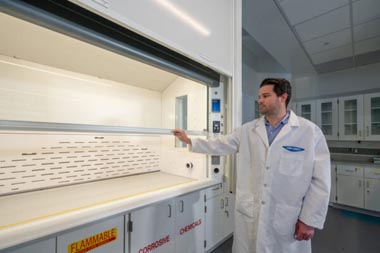
Ducted Fume Hood
Ducted standard lab fume hoods are the most common option have all the features needed for protection. These specialty units integrate with a building’s mechanical system to provide superior containment and air flow rates. They are ideal for hazardous applications that require a high level of safety and protection from hazardous fumes. Features such as filter monitoring systems, fire extinguishers, sound alert systems and wash down systems can be added to these units for maximum safety. Additionally, custom configurations are available for unique laboratory requirements. Ducted hood with special options are designed to ensure reliability and superior performance in even the most challenging environments. Overall, it is important to choose the right options based on the chemicals or hazardous materials within the laboratory.
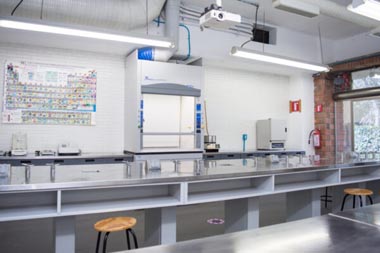
Ductless Fume Hood / Filtered Fume Hood
Ductless hoods or also named filtered fume hoods are a great option for applications with limited space, or those in need of superior containment and air flow rates. Unlike traditional ducted fume hoods, these units do not require ductwork to remove contaminated air from the laboratory. Instead, they use filtration systems to trap hazardous fumes and vapors, preventing them from being released into the surrounding environment. Filtered fume hoods can be used for a variety of tasks, from hazardous material handling to sample weighing. They are designed to protect workers in laboratories, industrial plants and manufacturing facilities from exposure to volatile substances and other toxic chemicals. Filtered fume hoods typically come with built-in filtration systems that can last up to 2-5 years with proper maintenance and depending on usage. It is important to regularly inspect and change filters as needed in order to ensure that the fume hood remains effective and that workers are properly protected.
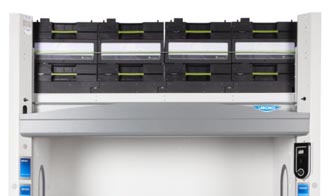
Protector Laboratory Fume Hoods – Labconco XStream, Premier and XL
These general purpose fume hood options offer containment and air flow rates that provide superior protection against hazardous fumes and lower operating cost. The Protector XL fume hood is the most dimensionally versatile line-up in the industry. With widths from 3’ to 16’, depths from 31.7” to 55.7, and both benchtop and floor mounted options, there is a High Performance XL fume hood to fit your application. The Protector Premier features a one-piece molded polyester resin liner for extended fume hood life under the harshest chemical exposure applications. By eliminating the seams, and minimizing surface porosity, this High Performance Hood is built to last. The Protector XStream delivers unparalleled protection from exposure boasting 0.000 ppm tracer gas loss even under the most adverse conditions, all while having the lowest volumetric rate to face velocity ratio in the industry, making it the safest and most energy efficient High Performance fume hood.
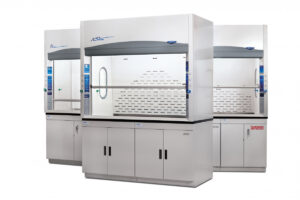
Floor-Mounted Fume Hoods
Often referred to as walk in hood, these are technically called “floor mounted fume hoods”. The term “walk-in” has been updated to “floor mounted” due to safety concerns of having personnel being inside of the hood. Floor mounted fume hoods typically feature a large sash window for complete visibility, and easy access to the interior of the fume hood when necessary. These floor mounted units are designed to provide superior containment and air flow rates to effectively remove hazardous fumes from the work environment. They can also accommodate larger items such as gas cylinders, chemical drums and large equipment. Floor mounted laboratory fume hoods also typically come with adjustable sash windows, allowing users to adjust the size of the opening for optimal airflow and protection. The sashes have the option of being vertical sliding or horizontal sliding depending on the application needed in the facility. This style of fume hood also has the option to be ducted or ductless/filtered. Floor-mounted laboratory fume hoods are ideal for hazardous applications that require a high level of safety and containment, as well as those with limited space requirements. They offer reliable performance, easy installation, and superior protection from hazardous fumes.
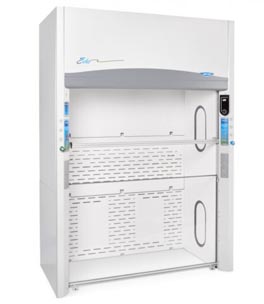
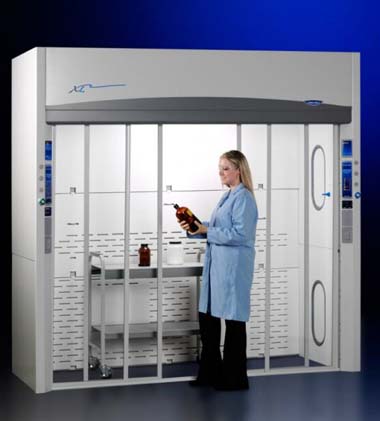
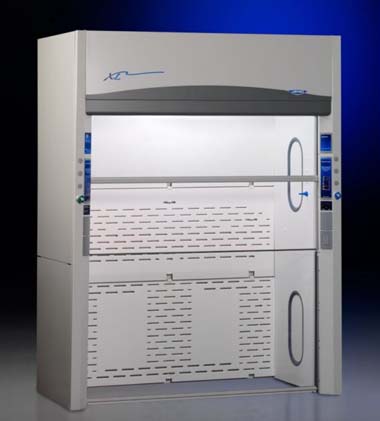
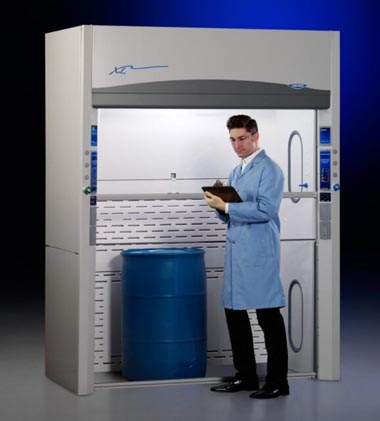
Specialty Fume Hoods
Specialty fume hoods offer specialized performance and protection when dealing with extremely hazardous applications. They are designed to provide maximum containment of volatile chemicals, gases, strong acids, and particulate matter in the most challenging environments. Specialty laboratory fume hoods typically feature a variety of safety features such as filter monitoring systems, sound alert systems, wash down systems, fire extinguishers and other advanced safety components. These specialty units can also be customized for unique applications and come in various sizes and configurations to accommodate different laboratory requirements.
When dealing with special applications, it is important to use special fume hoods. For instance, acid digestion hoods are often lined with PVC and feature Lexan sashes to resist etching from hydrofluoric acid. Additionally, floor-mounted hoods are typically used to accommodate larger apparatus. Perchloric acid hoods usually have washdown systems and liners made from either stainless steel or PVC to withstand acid exposure. Lastly, radioisotope hoods often have stainless steel one-piece liners. It is essential to use the right type of fume hood to ensure safety when dealing with special applications.
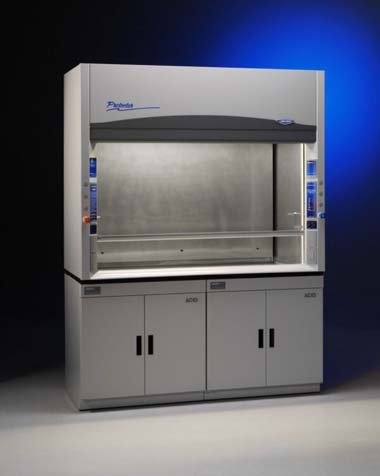
High Efficiency Fume Hood Airflow Demonstrations
HE laboratory fume hood Airflow demonstrations are an important tool for laboratories to keep up to compliance with applicable codes and standards. Demonstrations help ensure proper airflow performance, minimize risks of chemical exposure, and confirm that personnel are adequately protected from hazardous materials in the laboratory. The demonstration process typically involves measuring the fume hood face velocity—the speed at which air is entering or exiting the hood—as well as any other relevant parameters such as static pressure or filter pressure drop. The results of these measurements are then compared against established criteria and documented to show that the hood meets design specifications.
The high efficiency fume hood airflow demonstration is designed to show how the hood can effectively contain and remove hazardous fumes, vapors, gases, and particulate matter from the workplace. This demonstration uses real-time data acquisition technology to measure the performance of different types of fume hoods in a range of environments.
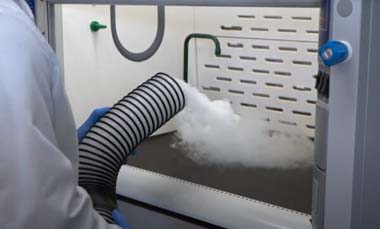
Demonstrating Compliance
Airflow demonstrations are essential for ensuring that the ventilation system is performing correctly in order to maintain proper containment of hazardous materials. The purpose of these demonstrations is to demonstrate compliance with relevant health and safety regulations regarding air quality standards, limit levels of chemical exposure, as well as proper containment of hazardous materials. Demonstrations can include a variety of tests such as smoke testing, tracer gas evaluation and sash window analysis on a laboratory fume hood.
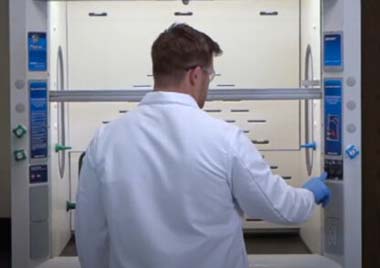
Material Placement
After the installation of a laboratory hood, it is important to place all materials in the correct location for optimal safety. This includes anything from reagents and solvents to lab equipment and instruments. Any material that emits hazardous fumes or vapors should be placed in the center of the fume hood’s work surface in order to maximize containment and ensure worker protection. Additionally, all open chemicals or equipment should be organized to avoid spills or other potential accidents. If any materials cannot be contained within the hood, they must be removed from the laboratory until a suitable solution can be found. By following these guidelines, laboratories can ensure their ventilation system is safe and effective while also adhering to all applicable health and safety regulations. With proper planning and execution, a successful fume hood installation and material placement will ensure workers are safe from hazardous fumes and vapors. If you are performing general chemistry or using chemical fumes, material handling is always critical.
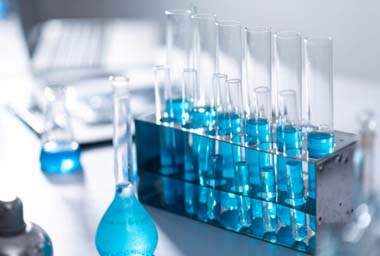
Fume Hood Installation
The installation of a fume hood is a detailed and complex process that requires special attention to detail. Professional technicians with specialized training in the safety, maintenance, and operation of these units are required to properly install them. The technician must first perform a series of tests to ensure the ventilation system meets all current regulations, codes, and standards. This includes verifying airflow rate, containment characteristics, air flow volume measurements, filter integrity tests, sash window alignment testing and more. Additionally, the technician should also check for any other potential hazards such as combustible materials or inadequate lighting. Lastly, they will configure various systems such as fire extinguishers, sound alert systems and wash down systems that are necessary for proper laboratory requirements. Depending on the experience and skill level of employees, a facilities person could perform the installation with the correct guidance and attention to detail.
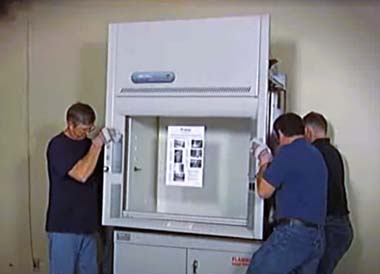
How To Select The Right Laboratory Hood System
The most important factor is to ensure the face velocity range of the hood is within the regulations and standards set by local, state, federal governments and ultimately the facility/business requirements and standards. This range helps to determine the optimal level of containment and protection from dangerous fumes or vapors. Additionally, it is important to select a fume hood that properly fits in the facility size and meets other specific requirements for the space.
Once the system is installed, it should be clearly marked with appropriate fume hood stickers that note any special instructions or warnings associated with the unit’s operation. It is also important to ensure all personnel are trained in proper lab safety protocol, including the use of personal protective equipment (PPE). Lastly, a periodic evaluation of fume hood performance should be conducted using ASHRAE Standard 110 Testing which measures air flow rates and face velocity in order to achieve optimal performance. With careful selection, installation, and maintenance, laboratories can ensure the safety of personnel through proper fume hood use.

Specialty Solutions Capabilities
At Specialty Solutions, we are proud to offer a variety of services that can help you select and install the right fume hood system for your laboratory. Our team of experienced technicians is certified in all applicable industry regulations and standards, ensuring our clients get the most secure and reliable fume hood systems available. We also provide ASHRAE 110 Testing which verifies face velocity range and ensures proper protection from dangerous fumes or vapors. Additionally, our specialists will provide personnel training on lab safety protocol as well as PPE selection to ensure everyone remains safe while working in an environment with hazardous materials. Whatever type of fume hood system you require, trust Specialty Solutions to help you purchase and reliably have a working operation. Contact us today for more information.
